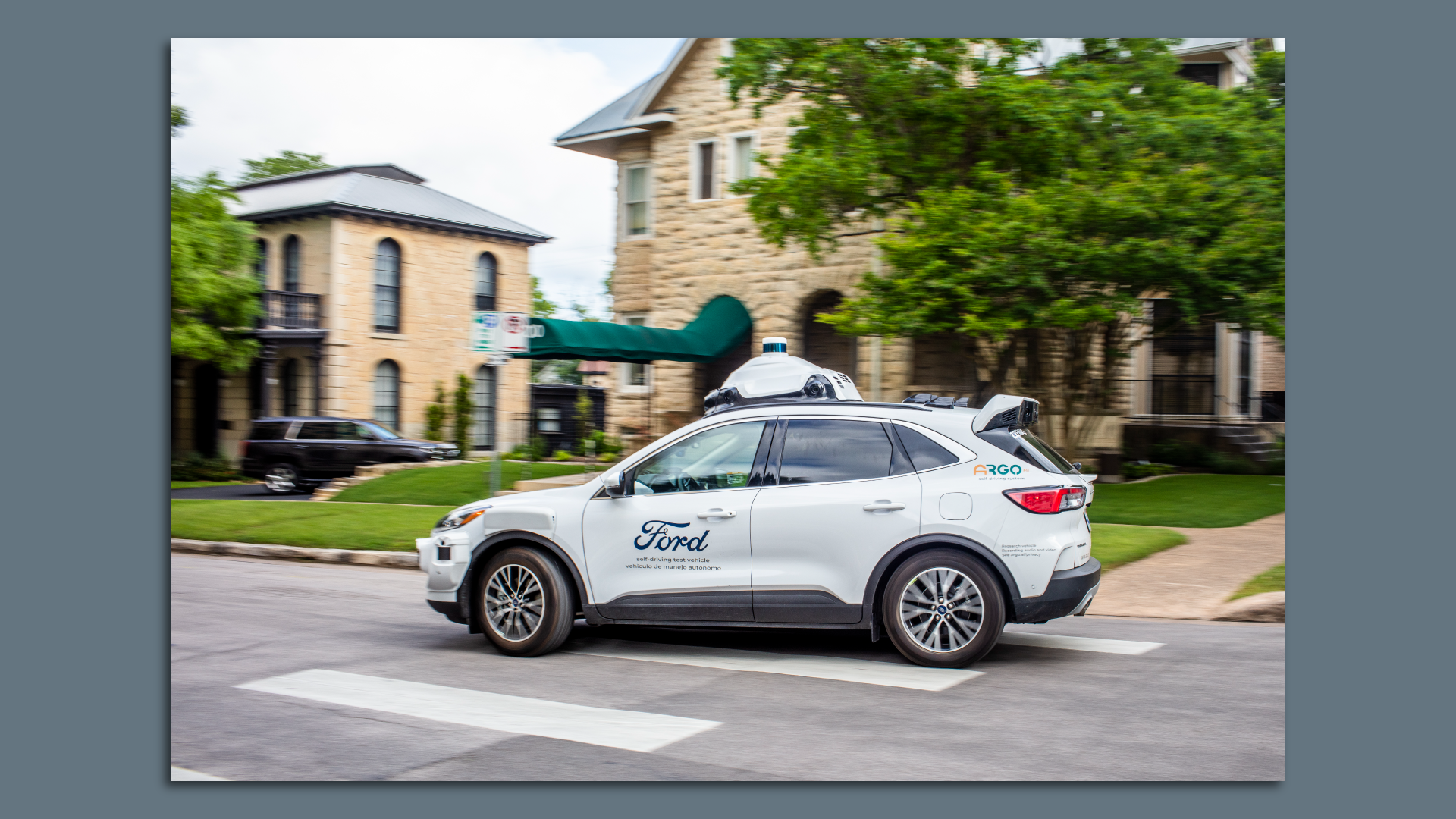Self-driving cars are now tooling around in a growing number of cities — even giving rides to the public, in some instances — but it'll be years before summoning a robotaxi is routine.
- One big obstacle: Teaching them the rules of the road in each city, which must be done block by block and street by street.
Why it matters: Despite high-profile efforts to get autonomous vehicles on the road, the obstacles — including engineering challenges, capital requirements, regulatory issues and liability questions — are immense, raising questions about how quickly the market can move forward.
Driving the news: Argo AI announced Tuesday that it has begun driverless testing operations in Miami and Austin, two of the eight cities in the U.S. and Germany where it is developing its AV technology.
- It's an important milestone on the path to commercial deployment for the Ford- and VW-backed company.
- Argo is unique for testing cars simultaneously in multiple cities; most of its rivals are focused on mastering one city at a time.
- Founder and CEO Bryan Salesky says the approach will enable Argo to gather richer data so it can quickly scale AVs into a viable business.
Where it stands: So far, only one company — Waymo — has a commercial robotaxi service that's up and running.
- In suburban Phoenix, you can hail a driverless taxi using Waymo's app. But the service is limited to a 50-mile area around Chandler and Tempe — you can't go downtown or to the airport, for example.
- In San Francisco, GM-backed Cruise is giving free rides to the public, but only in certain neighborhoods during overnight hours. It hopes to receive the first permit in California for a paid robotaxi service as early as June 2.
- In Las Vegas, another AV developer, Motional, has been running its cars on the Lyft network (with safety drivers behind the wheel) for several years. It plans to launch a fully driverless service in Las Vegas in 2023, with other cities to follow.
Meanwhile, other self-driving tech companies — like Nuro and Aurora — are focused on local delivery or long-haul trucking applications.
Details: Argo's driverless vehicles have operating limitations of their own:
- Only employees can ride for now, and the cars are confined to specific streets and neighborhoods.
- If they encounter heavy rain, they'll pull over and stop. The software doesn't allow them to operate in severe weather like snow, dense fog or hail.
Between the lines: AV developers put their own parameters on where and when their cars can operate safely, then they gradually expand those limits — geography, lighting conditions and weather, for example — as the technology improves and regulations allow.
- Each city is different, with different road layouts and unique local driving behaviors, explains Sam Abuelsamid, principal analyst at Guidehouse Insights, a research and consulting firm.
- People can figure out how to drive in a new city pretty quickly, he says, but training AV software to understand the local rules takes time.
- "Humans are naturally more adaptable than software is," he says. "It's just a reality. We do a better job of adapting to changing conditions than software does."
The bottom line: A driverless car is a lot like a Roomba vacuum: With regular use, it learns to navigate your entire living room. But to find the dust bunnies in your bedroom, it needs to be trained all over again.








